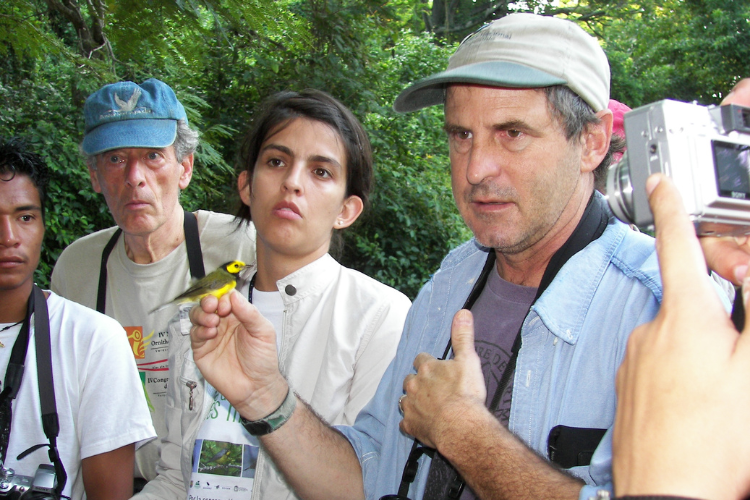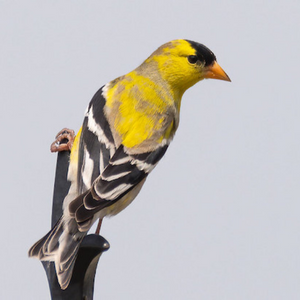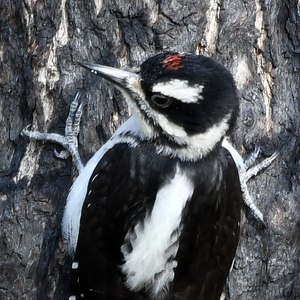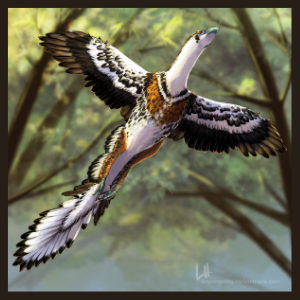IBP congratulates Peter Pyle on his lifetime achievement award from the American Birding Association. The award recognizes his meticulous work advancing the science of ornithology as well as his many contributions to the birding community. Peter has been a biologist with IBP since 1995, and is also a research associate at the California Academy of Sciences and the Bishop Museum in Hawaii. You can read more about Peter’s accomplishments in the ABA’s announcement of the award.
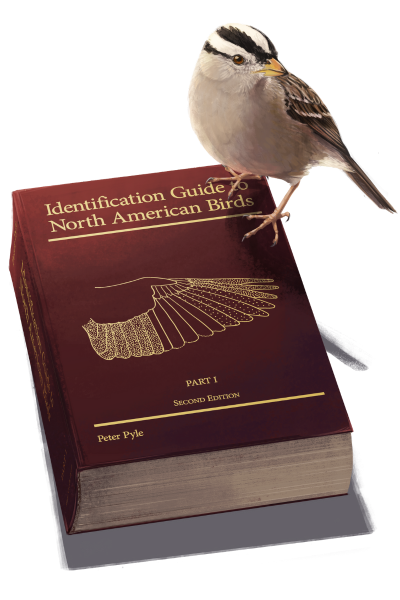
The newly released edition of the "Pyle Guide." Illustration by Lauren Helton.
Peter is not one to toot his own horn about awards like this but he would like to acknowledge his father, Robert L. Pyle, in his receipt of this award:
My dad was good friends with Jim Tucker and Stuart Keith when they founded the ABA in 1969 (when I was 12), and he quickly signed on to head the "Listing Rules Committee," tasked with figuring out what species could be counted on lists, in order to standardize listing totals across members. I recall many thorny discussions about "heard-only" and ship-riding birds, when non-native populations should be considered established, ethical questions around disturbing birds to add to lists, and the like. My dad was an active member up until his death in 2007, and in this respect I'm happy to continue carrying on the ABA torch. I was also pleased to be involved with adding the birds of the Hawaiian Islands to the ABA Checklist, something that he advocated for during his entire ABA tenure.
While we agree with the ABA that Peter’s accomplishments are extraordinary, we think he’s still a bit young for a lifetime achievement award. He’s still very busy and is currently immersed in editing the "Plumages, Molts, and Structure" sections for Cornell's Birds of the World on-line series. Accounts for species found around the world need revising as authors are working to update other sections, and the species Peter needs to work on come in rather randomly with respect to global distribution and taxonomy. Here’s a glimpse of what Peter’s working on these days.
In April and May I have thus far revised molts and plumages for 25 species varying from Woodford's Rail, Cinereous Vulture, Sunda Bulbul, Fork-tailed Drong-Cuckoo, and Jerdon's Babbler, to White-backed Woodpecker, Blue-capped Fruit-Dove, Cassin's Vireo, Pale-eyed Pygmy-Tyrant, Cape Verde Storm-Petrel, and Common Chaffinch. Many species have little to nothing known about molt and plumage sequences and so I get to dive into the Macaulay Library catalogue to figure these out as best as I can, as I did for hummingbirds here. Despite my never having heard of some of these birds, there may be 100s or even 1000s of images at Macaulay, allowing me to filter for age, sex, location, month, etc., and thereby discover when molts occur and how plumages progress. I then get to choose 2-3 representative images of each plumage/sex and write captions on what to look for. It's sort of like what I have done in my Identification Guides, but for birds around the world. I am most enjoying revising accounts for complicated species of little-known families, such as African Finfoot and Andean Ibis, both of which I have recently refurbished. Doing this has really emphasized the value of using the "Humphrey-Parkes" molt and plumage nomenclature in Birds of the World accounts. Purposeful to me now, I feel I am promoting this system for young and future ornithologists over other, still-used, boreal-centric terminologies that founder on a global basis.
Well done on this much-deserved honor Peter!
You can listen to a recent interview with Peter on the ABA's podcast here: The New Pyle Guide is Here with Peter Pyle, by Nate Swick.


